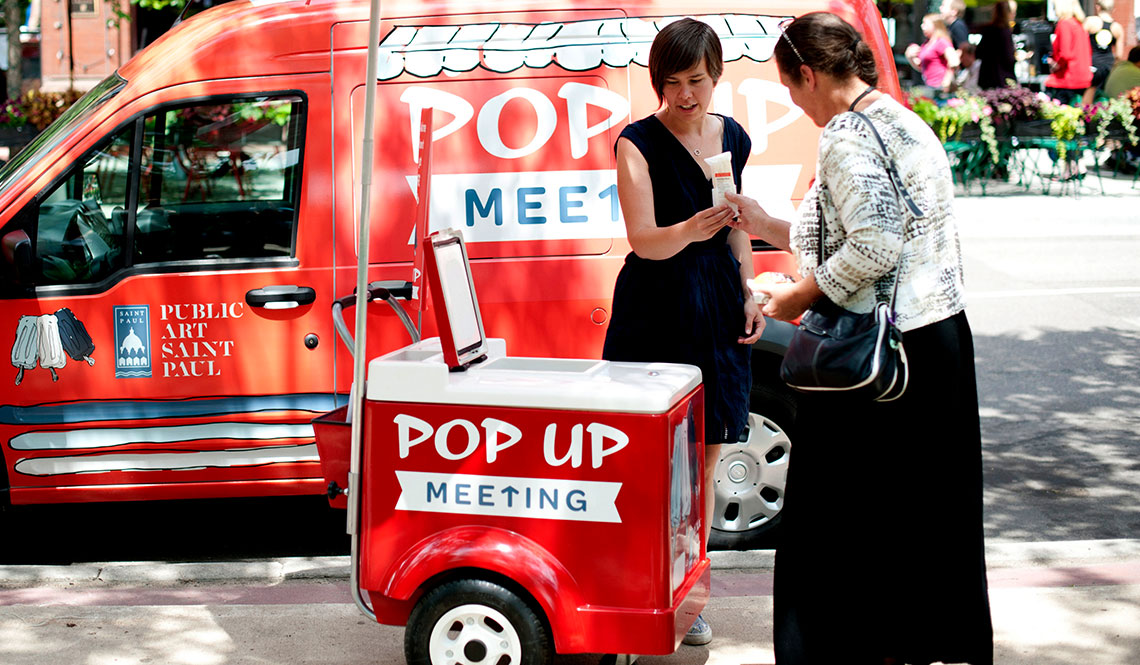Play all audios:
Facebook Twitter A public chalkboard made it easy to gather feedback about alleys in Salt Lake City. Photo by Molly Robinson
Salt Lake City's pedestrian challenges began with the city layout Mormon leader Brigham Young developed in the 19th century. His plat called for blocks measuring 660 square feet with streets
that were 132 feet wide. ("Wide enough to turn an ox cart around without resorting to profanity," he purportedly said.)
Those sizable blocks were eventually divided and subdivided, with makeshift alleyways popping up as shortcuts. The downtown alleys became a quandary for contemporary planners. People wanted
to use the shortcuts, but they didn’t always feel safe — and pedestrians heading into the alleyways couldn't always predict where they'd emerge on the other end.
In 2012, urban planners were trying to figure out what to do with the series of public and private alleyways that cut through the downtown area's expansive city blocks.
Publicchalkboards and listening posts allow and encourage visitors (of all ages) to share their thoughts. The Union Market in Washington, D.C., often displays several chalkboards, each with a
unique question or prompt. Photo by Melissa Stanton
Inspired by artist Candy Chang's street art project in New Orleans after Hurricane Katrina, urban designer Molly Robinson decided to crowdsource the answer by setting up six community
chalkboards on which she wrote the prompt "I'd love this alley if …"
The chalkboards became so filled with answers that they needed to be erased daily (after photographing the ideas) to free space for more responses.
With the chalkboards, people of all ages could write their suggestions at any time of day or night. Unlike with an online survey, the respondents were looking right at the alleyway in
question. Unlike having to answer a pollster holding a clipboard, could participate on their own terms.
Among the actionable ideas:
An alleyway near a performing arts center has become a display showcasing the ethnicities of people who had lived in the area over the years.In another alley,a weekly food truck event opened.A property owner who was inspired by the exercise converted the first floor of his parking garage to be pedestrian friendly, with shops and cafes.Take a look
at the slideshow "Signs That Say So Much"Read "Solutions for Back Streets and Underused Spaces" to learn more about creating and transforming public places.This article is an excerpt from
the "Community Engagement" chapter of the AARP book Where We Live: Communities for All Ages — 100+ Inspiring Ideas From America’s Community Leaders.
Reporting by Mitchelle Stephenson
Page published October 2017
More from AARP.org/Livable
Use the dropdown to choose a livability topic.
Select a Subject Select a Subject AARP.org/Livable Home Page AARP Age-Friendly Network AARP Community Challenge AARP Livable Communities Newsletter AARP Livable Map Bicycling Community
Engagement Community Health and Wellness Community Resilience Community Diversity Economic Development High-Speed Internet Access Housing Inspiring Examples Livable Lessons Local Solutions
Placemaking Public Places and Outdoor Spaces Rural Livability Social Participation Surveys and Statistics Transportation Walkability Workshops and Conferences Zoning and Land Use

